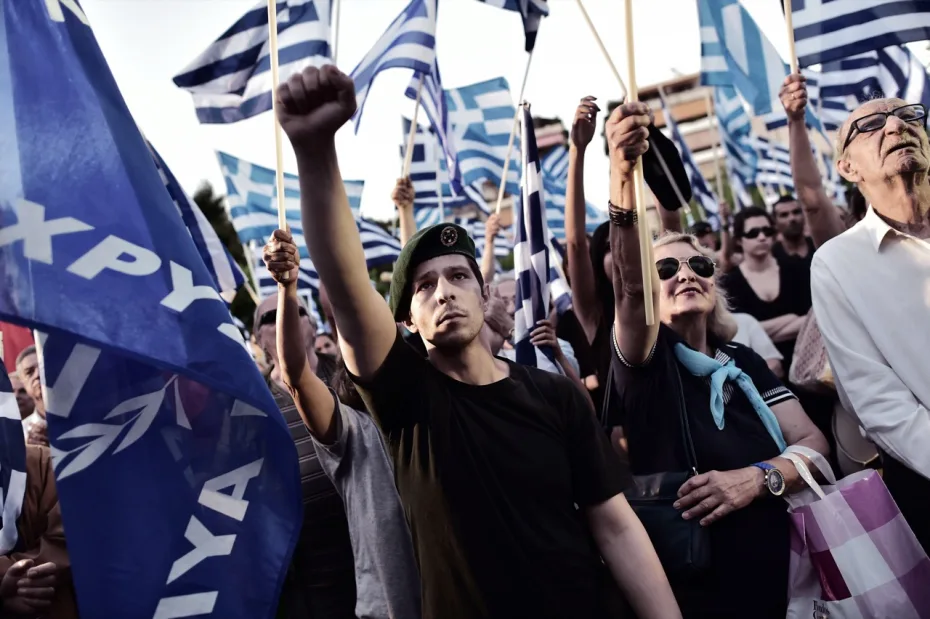In the ever-evolving landscape of global politics, certain ideological patterns reappear with unsettling familiarity. One such term making its way back into public discourse is fascisterne. Though rooted in the early 20th century, the echoes of this ideology are far from silent. This guide offers a fresh lens into the dynamics, historical roots, and present-day manifestations of a belief system that continues to challenge democratic principles.
Tracing the Ideological Origins
Understanding where a political doctrine originates often helps us predict how it might emerge again. What we today recognize as fascism took shape in the turbulent years following World War I. Scarred by economic hardship, social upheaval, and national insecurity, Europe became the breeding ground for authoritarian ideas cloaked in promises of unity and strength.
The symbolism tied to early fascist movements — from the ancient Roman fasces to military parades — reinforced a longing for order amid chaos. Italy and Germany became epicenters of this ideology, where it was molded into systems that not only ruled but terrorized.
Hallmarks of a Control-Driven System
Though definitions may vary, several recurring traits are widely associated with this political model:
Centralized Power
Such systems are often led by a single figure or party that tolerates no dissent. Checks and balances dissolve in favor of sweeping control.
Cultural Superiority
A strong focus on national pride is emphasized, often at the expense of multicultural inclusion. Homogeneity becomes both the goal and the standard.
Elimination of Dissent
Media outlets, opposition groups, and social critics are silenced, not through debate, but by force, law, or fear.
Uniform Identity
From uniforms to slogans, a collective identity is imposed. Individual expression becomes secondary to conformity.
Market Domination with a Nationalist Bent
Rather than eliminating capitalism, this ideology often manipulates it to serve state goals, blurring lines between public good and private profit.
Moments That Changed the World
The 20th century bore witness to the dangerous scale of fascist ambition. Italy, under Mussolini, laid the groundwork, but it was Nazi Germany that expanded its reach with unparalleled brutality. Millions of lives were lost, and the world order itself was shaken.
Outside Europe, these ideas found fertile ground in various dictatorships across Latin America, Asia, and Africa. Though wrapped in different flags and slogans, their core similarities were unmistakable.
Today, when we speak of fascisterne, we are acknowledging not just a relic of the past, but a template that has reappeared in subtle and not-so-subtle ways.
The New Faces of an Old Threat
Democracies Under Strain
Modern authoritarian tendencies don’t always arrive wearing military uniforms. They now often cloak themselves in democratic legitimacy — elected through populist platforms only to undermine institutions once in power.
In these cases, the same tactics reappear: targeting the press, stoking ethnic tensions, rewriting laws to cement control. Fascisterne may not be named outright, but its fingerprints are evident.
Digital Echo Chambers
Technology has amplified ideological extremism. Online platforms, once celebrated for enabling global dialogue, now risk serving as megaphones for radicalism. Propaganda spreads faster, communities radicalize quicker, and facts become contested territories.
The Allure of Certainty
In a time of complexity and ambiguity, simplified narratives become seductive. Black-and-white worldviews — “us vs. them” — find willing audiences among the disillusioned and fearful.
Warning Signs Hiding in Plain Sight
To prevent history from repeating, it’s essential to recognize behaviors and systems that reflect past patterns:
- Charismatic leaders positioned as national saviors
- Systematic erosion of judicial and legislative independence
- Repression of critical voices under the guise of patriotism
- Militarized language used to describe civilian issues
- Use of surveillance and law enforcement to control, not protect
Mobilizing Resistance Through Awareness
Civic Literacy
An informed population is the first line of defense. Encouraging open discussion, critical thinking, and historical education creates citizens who are harder to deceive.
Grassroots Engagement
Real change often begins at the community level. Local advocacy, voter mobilization, and watchdog initiatives serve as vital counterweights to centralized authority.
Cultural Narratives That Unite
Counteracting division requires more than facts; it demands storytelling that reaffirms the value of diversity, cooperation, and empathy. In art, media, and daily interactions, messages that uplift human dignity must be amplified.
Clearing Up Confusion
Is fascism always tied to race or ethnicity?
Not necessarily. While racial ideologies played a central role in some regimes, the broader framework can center on culture, nationality, or ideology.
Can democracies become fascist?
Yes. Fascism can take root within democratic systems, especially when institutions are weakened or manipulated.
Are all authoritarian regimes fascist?
No. Not all authoritarian governments follow fascist principles. However, they may share overlapping features such as repression and nationalism.
Why do some groups deny fascist connections today?
Modern movements often rebrand themselves to gain wider appeal. They may disavow the term while continuing to practice its core tactics.
What role does the internet play in spreading these ideas?
The internet can serve both as a warning system and a breeding ground. While it helps spread awareness, it also facilitates echo chambers for radicalization.
Final Thoughts
Recognizing fascisterne in its many forms is a critical step toward safeguarding the freedoms we often take for granted. Its methods may have evolved, but the consequences remain chillingly familiar. The past has shown us what happens when societies remain passive in the face of rising authoritarianism.
Now more than ever, individual awareness and collective action are essential. Whether you’re an educator, artist, policymaker, or citizen, the responsibility to protect our shared humanity begins with understanding — and confronting — the forces that threaten it.
